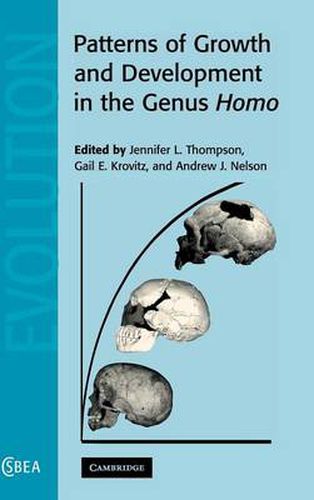Readings Newsletter
Become a Readings Member to make your shopping experience even easier.
Sign in or sign up for free!
You’re not far away from qualifying for FREE standard shipping within Australia
You’ve qualified for FREE standard shipping within Australia
The cart is loading…






It is generally accepted that the earliest human ancestors grew more like apes than like humans today. If they did so, and we are now different, when, how and why did our modern growth patterns evolve? This book focuses on species within the genus Homo to investigate the evolutionary origins of characteristic human patterns and rates of craniofacial and postcranial growth and development, and to explore unique ontogenetic patterns within each fossil species. Experts examine growth patterns found within available Plio-Pleistocene hominid samples, and analyse variation in ontogenetic patterns and rates of development in recent modern humans in order to provide a comparative context for fossil hominid studies. Presenting studies of some of the newest juvenile fossil specimens and information on Homo antecessor, the newest species assigned to the genus, this book will provide a rich data source with which anthropologists and evolutionary biologists can address the questions posed above.
$9.00 standard shipping within Australia
FREE standard shipping within Australia for orders over $100.00
Express & International shipping calculated at checkout
It is generally accepted that the earliest human ancestors grew more like apes than like humans today. If they did so, and we are now different, when, how and why did our modern growth patterns evolve? This book focuses on species within the genus Homo to investigate the evolutionary origins of characteristic human patterns and rates of craniofacial and postcranial growth and development, and to explore unique ontogenetic patterns within each fossil species. Experts examine growth patterns found within available Plio-Pleistocene hominid samples, and analyse variation in ontogenetic patterns and rates of development in recent modern humans in order to provide a comparative context for fossil hominid studies. Presenting studies of some of the newest juvenile fossil specimens and information on Homo antecessor, the newest species assigned to the genus, this book will provide a rich data source with which anthropologists and evolutionary biologists can address the questions posed above.